Anarchic Cinema: SALT OF THE EARTH
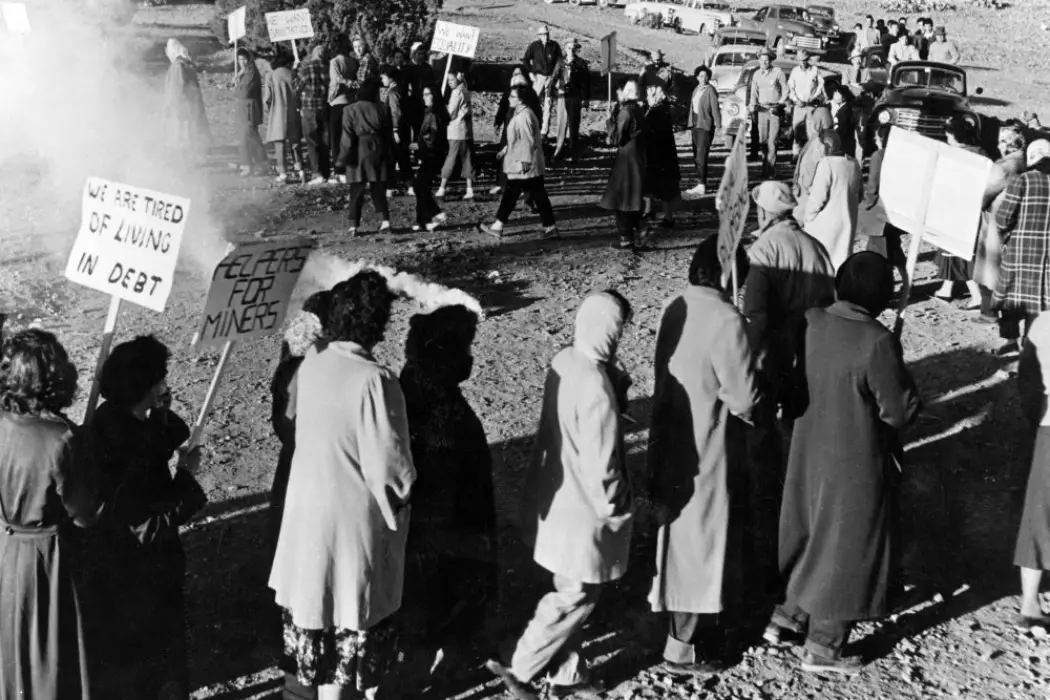
Matthew Roe is a director, writer, producer, film critic, theorist…
The legacy of a film and its makers is far more than just the effect the finished content had on the audiences and critics of the day, and how the work was utilized by subsequent generations. The legacy of a film is defined through the processes undertaken and obstacles surmounted in order to actually make the film a reality (see Orson Welles’ The Other Side of the Wind).
That isn’t to say that the final message of the product is not of an overarching importance, but the means by which the filmmakers had to employ in order for their film to be finished (and eventually screened) is what ultimately hallmarks the experience when it is viewed historically. This premise leads us into our next filmic spotlight, the 1954 drama Salt of the Earth, one of the most controversial films in American cinematic history.
The Blacklist
Salt of the Earth was written by Michael Wilson, directed by Herbert J. Biberman, and produced by Paul Jarrico – all three were high-profile victims of the infamous Hollywood blacklist. Those of us who submerge ourselves in film history will know a great deal of this shameful era, but I’ll be quick to catch those unititated up to speed.
The Hollywood blacklist was an unofficial denial of employment to professional artists who were accused of having sympathies or direct connections with the Communist Party, as well as having their passports confiscated or denied, and their activities monitored by federal agents. Sounds like a dystopian novel, right? Well, America became arguably one of the most distinct dystopias of the 1950s, and the blacklist became highly emblematic of this massive sociopolitical shift. Eventually, the blacklist became the standard of how all employment was handled in the United States for nearly twenty years.
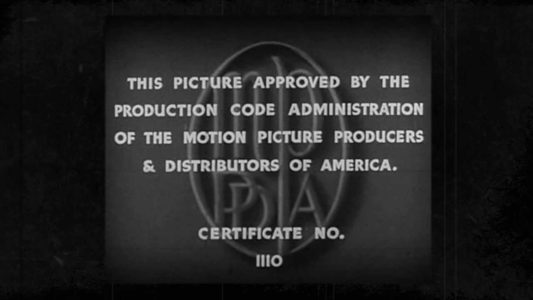
Precursor elements to the blacklist existed in some form since the 1920s, mainly through typical enforcement of the Hays Production Code by the Motion Picture Producers and Distributors of America. However, on July 29, 1946, William Wilkerson, founder of The Hollywood Reporter, published a “A Vote For Joe Stalin”. The article named several key Hollywood figures as communist sympathizers, which was later referred to as “Billy’s Blacklist”, and became the main basis for the House Un-American Activities Committee (which stayed active in various forms till 1975, when its responsibilities were assumed by the House Judiciary Committee) to begin its largely-publicized hearings of Hollywood elites in the mid-1940s.
The effects of these hearings were compounded when President Truman decreed in 1947 that federal employees would be screened for any association with organizations or advocations deemed “Totalitarian, Fascist, Communist or subversive”. Coupled with several other highly-publicized espionage events in rapid succession, this progression quickly engulfed the United States in the Second Red Scare, which allowed Senator Joseph McCarthy to tote his alleged list of communists working in the State Department less than three years later. This would cement the tyranny of McCarthyism interrogation tactics utilized by the House Un-American Activities Committee for nearly a decade.
Many individuals called before the Committee were actual card-carrying communists, and many were not – some assisted the investigations, some opposed them, and scores of lives were destroyed in the crossfire. Before the worst of the Red Scare had begun however, a famous cohort of filmmakers, writers, and producers were cited for contempt of Congress and subsequently jailed for a new methodology to the Committee hearings: they remained silent. These were the Hollywood Ten, and Biberman was one of those ten.
The Hollywood Ten
Though we constantly discuss those falsely implicated individuals who were ruined under the might of these hearings and the associated public scorn, the majority of the Hollywood Ten were actual members of the Communist Party. Some like Samuel Ornitz and Alvah Bessie proudly wrote for leftist theatrical and literary companies, and contributed considerable opinion editorial to the American Marxist magazine The New Masses. Their stance was not that they weren’t communists, but that belonging to the Communist Party was not a crime. With the aid of their lawyers, they proclaimed the hearings had questionable legal frameworks to investigate anyone, and that it was a blatant disregard for their basic First Amendment rights to freedom of speech and thought.
This approach would be adapted by several people who were subsequently blacklisted after the Ten, though the Committee was dismissive and hostile to these individuals, often refusing to allow them to speak in their own defense. This occurred in tandem with “friendly witnesses”, who actively cooperated with the Committee, having ample time and leeway during the hearings to wax philosophical about the moral decay of Hollywood (looking at you Ayn Rand). Though the Ten’s tactic was not successful, leading to the their imprisonment and loss of work stateside, the time was highly emblematic of the struggle of free speech against an increasingly oppressive governmental system, where evidence-based testimony and investigation takes a backseat to hysteria.
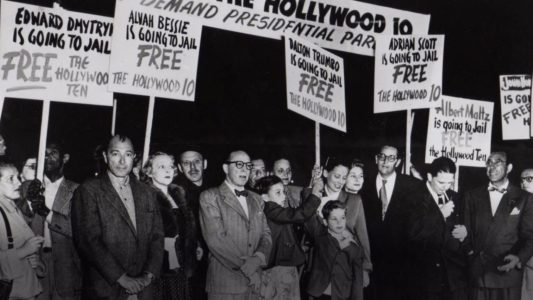
After the Ten were imprisoned, the only member that would later recant was director Edward Dmytryk. He would claim to the Committee in 1951 that his participation with the Communist Party, and any and all communist and socialist messages in any of his films, were due to pressure from individuals such as John Howard Lawson (founder of the Screen Writers Guild), Adrian Scott, and Albert Maltz. His decision remains a highly controversial one to this day, often overshadowing many of his great cinematic achievements in the years following his prison days with the Ten.
Biberman, however, was decidedly unapologetic about his idealist position, and subsequently stripped of his Director’s Guild of America membership, and was more or less barred from working in the Hollywood film industry for the remainder of his life. His wife, actress Gale Sondergaard, was likewise blacklisted, and didn’t receive any steady work in the industry until after her husband’s death from bone cancer in 1971. Biberman would only manage two films after his fight against the Committee hearings: Salt of the Earth in 1954 and Slaves in 1969.
The Idea
In 1950, the Empire Zinc Company was running mines nearby to Silver City, New Mexico, which payed and housed its caucasian workers far better than their numerous Mexican and Mexican-American miners. When the miners went on strike, demanding an end to Empire’s discriminatory practices, the company hired the local police to harass and intimidate picketers, attempted to evict those living in company homes, and cut off credit for the strikers and their families at the local grocery store. While Empire’s administration (like many similar institutions of the era) had a reputation for hiring brute squads and scab workers to incite violence on the picket lines and take away the jobs from strikers, widely published reports of the strike inspired other miners in the surrounding region to join the picketing, pushing the conflict to a national stage.
After a grueling eight months, the miners were slapped with a court injunction forbidding them from returning to the strike, threatening significant jail time and monetary fines as penalties. However, as the men were forced off the picket line, their wives took up the cause. While still suffering violence and intimidation via the local brute squads and police, and even being served a second anti-picketing injunction, the women had drawn even greater national attention – which subsequently drew in Wilson, Biberman, and Jarrico.
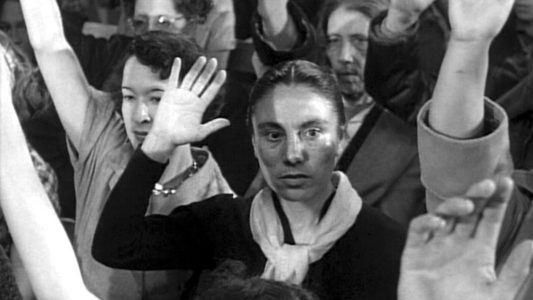
While the strike lasted for an enervating fifteen months, Wilson became close confidants with the strikers as he gathered material day after day for the screenplay that would become Salt of the Earth. His desire to tell an accurate (yet dramatized) account of the strike, and of the sacrifices and successes experienced by the strikers and their families eventually lead the film to primarily cast the actual miners and labor union members as varied cinematic versions of themselves. Though the strike was a success in securing most of the demands of the workers, including proper sanitation and hot water to company houses, the production of the movie became almost as equally difficult and perilous as the strike had been – though instead of a mining company, Hollywood elites including Howard Hughes, local and state governments, the House of Representatives, and even the Federal Bureau of Investigation tried every which way to stop the production.
The Production
The International Union of Mine, Mill and Smelter Workers, who had been with the miners on the front lines throughout the strike, decided to sponsor the film’s production. While this support was greatly accepted by the company, it also brought its own host of issues, as the union had been denounced a few years prior for being a seat of communist subversion. Undeterred by the public personification of the film and its artists, the filmmakers, together with producer Adrian Scott and the distributor Simon Lazarus putting up financial backing for the company, set out to make their ambitious project a reality.
However, the desire for the film’s central themes made it near impossible for the company to find willing and able participants in traditional spheres of Hollywood professionals. They eventually went to other blacklisted artists for some key roles, and relied heavily on documentary crews from New York and individuals with no industry experience to fill in the remaining positions – the turnaround for those who worked on the film was insidiously impressive, as many would cave to the mounting external pressure of being jobless and on FBI watchlists. This would also be similar with finding a main cast, which would come to include blacklisted actor Will Geer, and famed Mexican starlette Rosaura Revueltas. Revueltas would eventually be jailed during the production on an alleged passport violation and deported to Mexico after a courtroom declared her to be a “dangerous woman”. The filmmakers would use a stand-in to complete the remainder of Revueltas’ scenes – she would never work on an American film again.
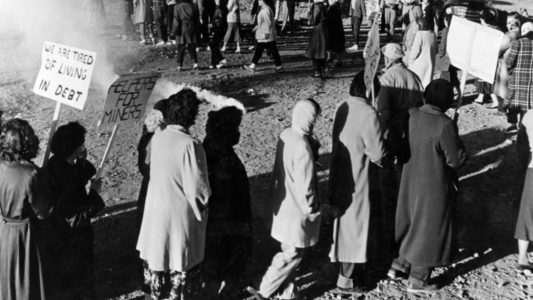
Marred by constant verbal and written threats, anonymous gunshots taken at actors and crew, and a sweeping denial of production services and resources to the filmmakers, the film somehow managed to finish principal photography. However, after the first rushes were shown to the cast in a theater in Silver City, hysterical locals voiced their concerns that the production was brainwashing the local Mexican Americans, which soon began an additional tidal wave of accusations. Even California Congressman Donald Jackson claimed the film was “deliberately designed to inflame racial hatreds and to depict the United States of America as the enemy of all colored peoples”. There is no evidence to suppose Jackson ever saw a single scene of the film from which he based his conjectures.
However, the damage was compounding. While dodging both internal sabotage and possible destruction of the film from federal agents who were tailing members of the crew, the footage was developed in secret, often delivered in misleading or unmarked canisters, and edited in a makeshift lab in an unknown random “shack” in Los Angeles. Though very few people ever saw the film while it was under construction, it was always spoken of in code, with editors Joan Laird and Ed Spiegel almost living in the editing room until the final cut was complete. When the film had to be scored, composer Sol Kaplan (who hadn’t been blacklisted, but was still fired from his position at 20th Century Fox) wasn’t even able to see the film as he was writing and recording the music, as no sound stages or recording studios would allow the film even on the premises, buttressed by continued threats of confiscation of the negative. He would have to create the music entirely blind to how the film progressed, with a self-made system of scratched lines and punches on black film to know when to hit specific emotional notes.
The Reception
When Salt of the Earth finally managed to premiere in a solitary theater in New York City, it met far better reviews than any of the company had expected. Sincere and positive reviews came from the likes of The New York Times, but those were coupled with scathing anti-communist rhetoric from leading publications like Sight and Sound, with The Hollywood Reporter famously declaring that the movie was made “under direct orders of the Kremlin”.
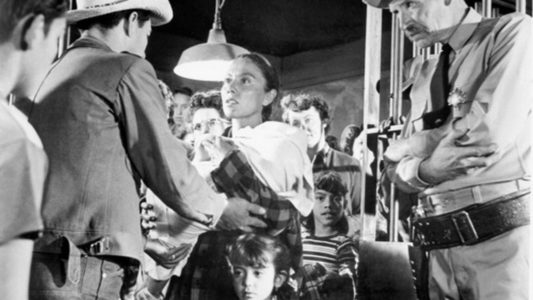
The film became the first and only movie blacklisted in America, as it recieved no outward bans in any particular city or state, but no theater or distributor would touch it. This would remain the status quo for the film until almost 1965, when the native tides of sociopolitical change began to swing in an opposing direction. Though Salt of the Earth would remain taboo and untouchable at home, it was a large critical success abroad, snagging awards and acclaim from European audiences and critics, and became the only American film screened in China for almost thirty years.
Though the film’s copyright would expire in 1982, and was thrown into the public domain, it would be selected for preservation in the National Film Registry in 1992, and has been subsequently declared a timeless American classic.
The Legacy
There have been a multitude of banned films throughout cinema’s brief world history, with reasonings stretching from the overly cautious to the downright silly. Though the reasons for films being banned may range the spectrum, the banning of many films would resultedly become emblematic of each movie’s social-consciousness far more than the actual narrative could ever hope to achieve. Several films that have fit this bill (in some way): Margaret Sanger’s Birth Control (1917), Richard Oswald’s Different from the Others (1919), Slatan Dudow’s Kuhle Wampe (1932), and Stanley Kubrick’s Paths of Glory (1957).
However, Salt of the Earth remains the only film in American history (to my knowledge) where each stage of production and distribution was upturned and impeded by almost every level of government and police enforcement in the country. While the House Un-American Activities Committee reigned in Washington DC, this independent gaggle of filmmakers and zinc miners managed to shake up the entire bureaucratic and artistic infrastructure of the country. While we set aside how impressive that is in its own right, the film’s success in being completely produced and continually screened to this day established a precedent in motion pictures that freedom of speech is an ideal for which sacrifice and struggle is a necessity.
Its potent and well-executed themes of social, racial, and gender equality in a time where such ideas were seen as subversive, is a triumph for not only the progression of America’s identity as a country, but also of its people taking to heart the country’s touted ideals of life, liberty, and the pursuit of happiness. Both the final film and the frenzied, seemingly-doomed production of Salt of the Earth espouses the fiercely independent nature of anarchic filmmaking that we have discussed in each of this column’s previous installments in a way that no other spotlit film or maker have managed to exude.
While many contemporary voices decry at their perceived trampled rights in the face of adversity, and others continue to demand and risk their lives and livelihoods for the sake of equality, these filmmakers circumnavigated overwhelming odds, daily violence, looming jail sentences, and continued blacklisting in order to tell a story deserving of its codification in both the Library of Congress and Museum of Modern Art. It is a film as much about the filmmakers as it is about the miners who fill its cast, and what fighting for equality can truly mean when everything is set against you. That’s Anarchic Cinema.
What are your thoughts on Salt of the Earth? Do you think it holds true to the idea of Anarchic Cinema? Tell us your thoughts in the comments below!
Does content like this matter to you?
Become a Member and support film journalism. Unlock access to all of Film Inquiry`s great articles. Join a community of like-minded readers who are passionate about cinema - get access to our private members Network, give back to independent filmmakers, and more.
Matthew Roe is a director, writer, producer, film critic, theorist and historian, with over 12 years experience producing film, video, television, and online content. He currently writes DVD/Blu-ray reviews for Under the Radar Magazine, movie reviews for Film Threat, and contributes features to the Anime News Network. He has won two Vollie Television Awards, an Honorable Mention at the LA Movie Awards, and is a Cult Critic Award Finalist. Matthew is a member of the Political Film Society and the Large Association of Movie Blogs.












